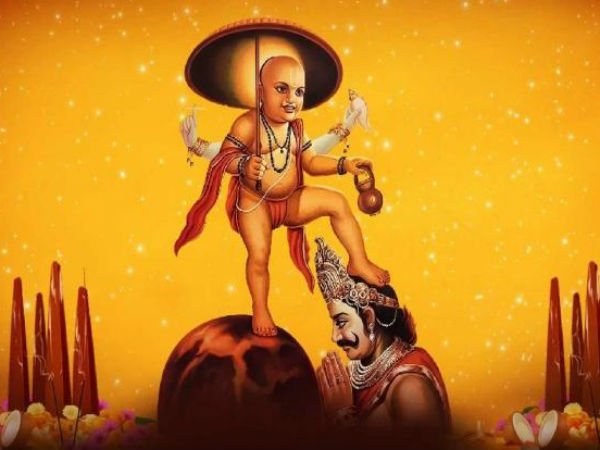Vamana Purana with meaning
Vamana Purana

The Vāmana Purāṇa: History and Context
The Vāmana Purāṇa is one of the eighteen Mahāpurāṇas of Hindu tradition. It is named after Vāmana, the dwarf incarnation (avatāra) of Vishnu, who subdued the demon-king Bali. While its title suggests a text dedicated primarily to Vishnu’s Vāmana form, the Purāṇa is in fact more Shaiva in orientation, with long sections praising Shiva, sacred geography, and pilgrimage. This makes it a fascinating example of how Purāṇas often blended sectarian elements despite their apparent titles.
Date and Composition
The exact date of the Vāmana Purāṇa is uncertain. Scholars generally suggest its earliest layers were composed between the 7th and 9th centuries CE, though like many Purāṇas, it continued to be expanded and redacted for centuries. Some later insertions may go as far as the 13th century CE.
Unlike some other Purāṇas, the Vāmana Purāṇa survives in a fairly incomplete and fragmented form. The extant text contains about 7,000 verses (in 95 chapters), though older references indicate it may once have been considerably longer.
Structure
The Vāmana Purāṇa does not follow the standard Purāṇic model of five topics (pañcalakṣaṇa: creation, destruction, genealogies, reigns of Manus, and dynastic history). Instead, its content is mainly theological and geographical, focusing on:
- Sacred Geography – Extensive descriptions of pilgrimage sites (tīrthas), holy rivers, mountains, and shrines, especially in North India (Kurukshetra, Mathura, Avimukta/Varanasi, Gaya, etc.).
- Shaiva Material – Many hymns and stories glorify Shiva, his consort Pārvatī, and his sacred abodes. Accounts of linga worship and Shaiva rituals are included.
- Vaishnava Content – Narratives of Vishnu’s incarnations, including the Vāmana avatāra, are preserved, though they occupy a smaller portion.
- Mythological Narratives – Episodes from the Rāmāyaṇa and Mahābhārata cycles are retold, emphasizing their moral and religious lessons.
Religious and Cultural Significance
Despite being named for a Vaishnava deity, the Vāmana Purāṇa is often considered more Shaiva than Vaishnava in emphasis. This reflects a historical pattern: Purāṇas were not fixed sectarian scriptures but flexible repositories, often adapted by local traditions.
The text is particularly important for the study of Hindu sacred geography. Its detailed accounts of holy places served as pilgrimage manuals (tīrtha-māhātmya), guiding devotees to sacred sites and prescribing the benefits of visiting them. Such sections had immense cultural impact, fostering the growth of pilgrimage networks across India.
At the same time, its inclusion of Vishnu narratives ensured that it remained acceptable to Vaishnava communities, showing how Purāṇas worked as shared religious texts rather than exclusive sectarian canons.
Historical Influence
The Vāmana Purāṇa provides historians with valuable information on medieval Hinduism. It reflects the prominence of pilgrimage culture, the rising importance of Shaiva worship, and the integration of Vaishnava mythology into broader Purāṇic frameworks. Its emphasis on sacred landscapes highlights how geography was sacralized in Hindu thought, transforming rivers, forests, and cities into embodiments of divine presence.
Though less cited than the Bhāgavata Purāṇa or Śiva Purāṇa, the Vāmana Purāṇa remains important for scholars studying regional religious practices, temple traditions, and tīrtha-māhātmya literature. It demonstrates how Purāṇas evolved not as static texts but as living traditions, constantly reshaped by communities to suit devotional, cultural, and political needs.




















































